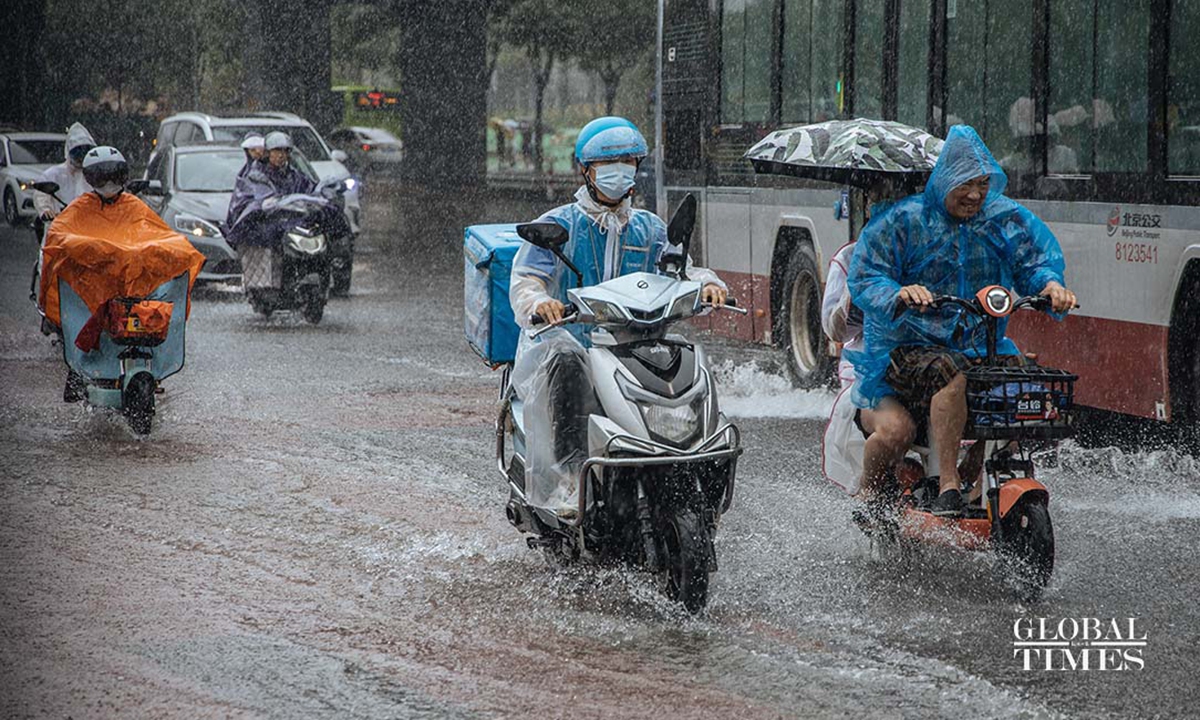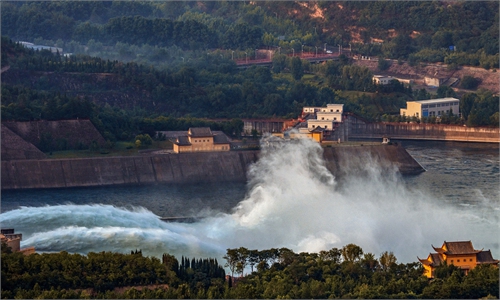Blue Book on Climate Change in China 2021 shows increasing trend of extreme weather events in the country

Beijing residents ride forward in heavy rain, experiencing a less busy rush hour on Monday morning as many companies asked employees to work from home or cancel the clock in. Photo: GT/Li Hao
The China Meteorological Administration (CMA) held a press conference on Wednesday where it rolled out the Blue Book on Climate Change in China 2021. The report shows that between 1961 and 2020, extreme heavy precipitation sees a gradual rise, and extreme heat events have increased significantly in the country since the mid-1990s. Comprehensive climate observations and several key indicators show that climate warming is continuing and risk of experiencing extreme weather and climate events in China is growing.
The Blue Book provides the latest monitoring information on climate change in China and globally, including data on the atmosphere, hydrosphere, cryosphere, terrestrial biosphere and driving factors of climate change.
According to the Blue Book, China is a sensitive and significant area impacted by global climate change with a rise of temperature significantly higher than the global average during the same period.
In 2020, sea level in China's coastal areas was 73 mm higher than the average from 1993 to 2011, the third highest since 1980. The continued rise of sea temperature in summer has caused severe coral bleaching in several islands, including Nansha, Xisha, Hainan, Taiwan and Beibu Gulf.
The Blue Book points out that China's climate risk index from 1961 to 2020 shows a tendency of increase, and in 2020 the number was 10.8, the third highest value in that period.
The Blue Book also shows that the average intensity of typhoons landing in China has increased since the late 1990s. Additionally, between 1961 and 2020, the average number of dust days in northern China registered a significant decline.
As for China's climate situation this year, Wang Zhihua, spokesperson of the Emergency Disaster Reduction and Public Service Department of the CMA noted that average temperature and precipitation in China in July this year were higher than in previous years and it is expected that climate conditions will remain active in August.
According to Wang, several tropical cyclones may significantly affect China's southern and southeastern coastal areas in August and the northern regions may face strong convective weather, such as wind and hail. High precipitation is also expected across the country.
During the press conference, Jia Xiaolong, Deputy Director of the National Climate Center, addressed media concerns about extreme weather around the world, including the recent torrential rains in Central China's Henan Province. He noted that extreme weather events have occurred globally this summer, including high temperatures in North America and flooding in Europe, which are direct manifestations of the abnormal global atmospheric circulation.
Global warming intensifies the instability of the climate system, which is an important climate factor for the frequent occurrence of extreme weather and climate events, Jia said.



